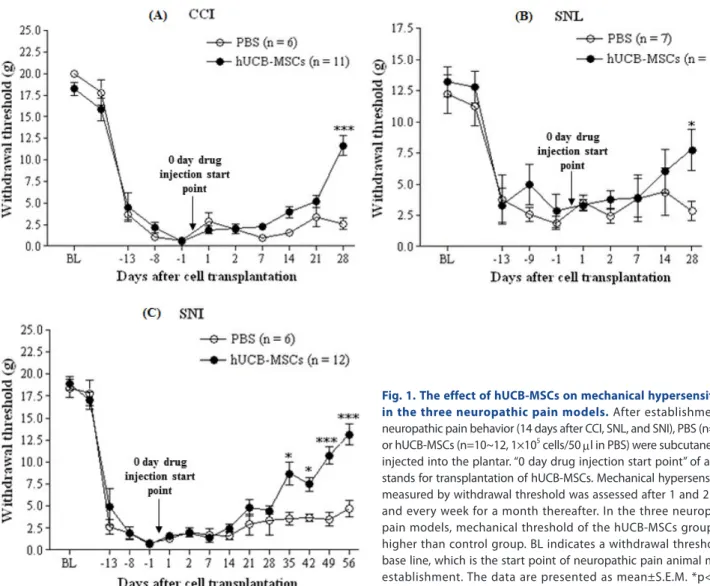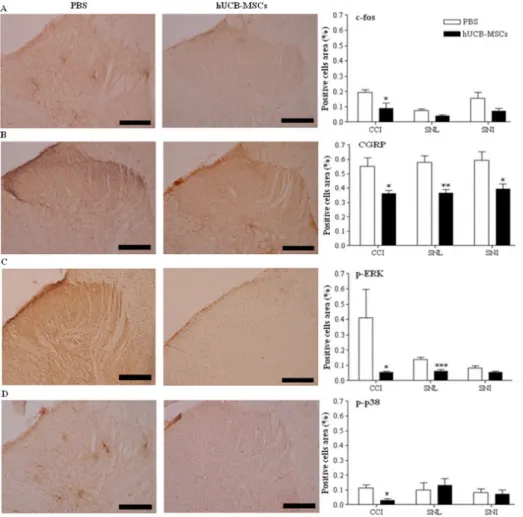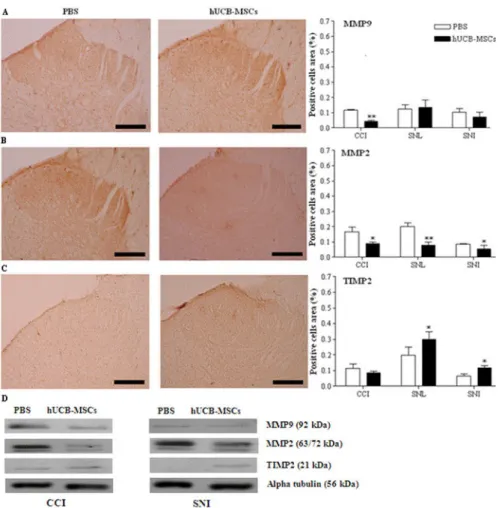Author contributions: H.J.K. and K.S.K. conceived and designed the study. M.J.L. and T.G.Y. performed the experiments. M.J.L., T.G.Y. and M.K. analyzed and interpreted the data. M.K., H.J.K. and K.S.K. wrote the manuscript.
This is an Open Access article distributed under the terms of the Creative Commons Attribution Non-Commercial License, which permits unrestricted non-commercial use, distribution, and reproduction in any medium, provided the original work is properly cited.
Copyright © Korean J Physiol Pharmacol, pISSN 1226-4512, eISSN 2093-3827
INTRODUCTION
Neuropathic pain is caused by damage to or pathological changes in the peripheral or central nervous system [1]. To date, the mechanisms of neuropathic pain are poorly understood;
however, spontaneous pain, hyperalgesia, and allodynia have been recognized as cardinal signs. Animal models of neuropathic pain have been developed to simulate clinical settings such as causalgia [2]. Specifically, chronic constriction injury (CCI) [2], spinal nerve ligation (SNL) [3], and spared nerve injury
(SNI) [4] models are used extensively to study the mechanisms of neuropathic pain. Neuropathic pain is also known to be intractable, where treatment using pharmacological drugs is associated with several side effects such as intolerance, addiction, and poor efficacy [5-8]. Therefore, a new treatment strategy for treatment of neuropathic pain is necessary and transplantation of stem cells, a novel therapeutic modality developed for intractable neurological diseases, is a potential alternative.
Compared to stem cells of embryonic, bone marrow, and adipose origin, human umbilical cord blood-derived multipotent
Original Article
Effect of subcutaneous treatment with human umbilical cord blood-derived multipotent stem cells on peripheral neuropathic pain in rats
Min Ju Lee
1,#, Tae Gyoon Yoon
2,#, Moonkyu Kang
1, Hyun Jeong Kim
1,*, and Kyung Sun Kang
3,*
1
Department of Dental Anesthesiology and Dental Research Institute, School of Dentistry, Seoul National University, Seoul 03080,
2Department of Anesthesiology and Pain Medicine, Konkuk University Medical Center, Research Institute of Medical Science, Konkuk University School of Medicine, Seoul 05030,
3Adult Stem Cell Research Center, Laboratory of Stem Cell and Tumor Biology, Department of Veterinary Public Health, College of Veterinary Medicine, Seoul National University, Seoul 08826, Korea
ARTICLE INFO Received July 1, 2016 Revised August 23, 2016 Accepted November 29, 2016
*Correspondence Hyun Jeong Kim E-mail: dentane@snu.ac.kr Kyung Sun Kang E-mail: kangpub@snu.ac.kr Key Words
Cord blood stem cell transplantation Neuropathic pain
Rat subcutaneous injection
Tissue inhibitor of metalloproteinase 2
#


